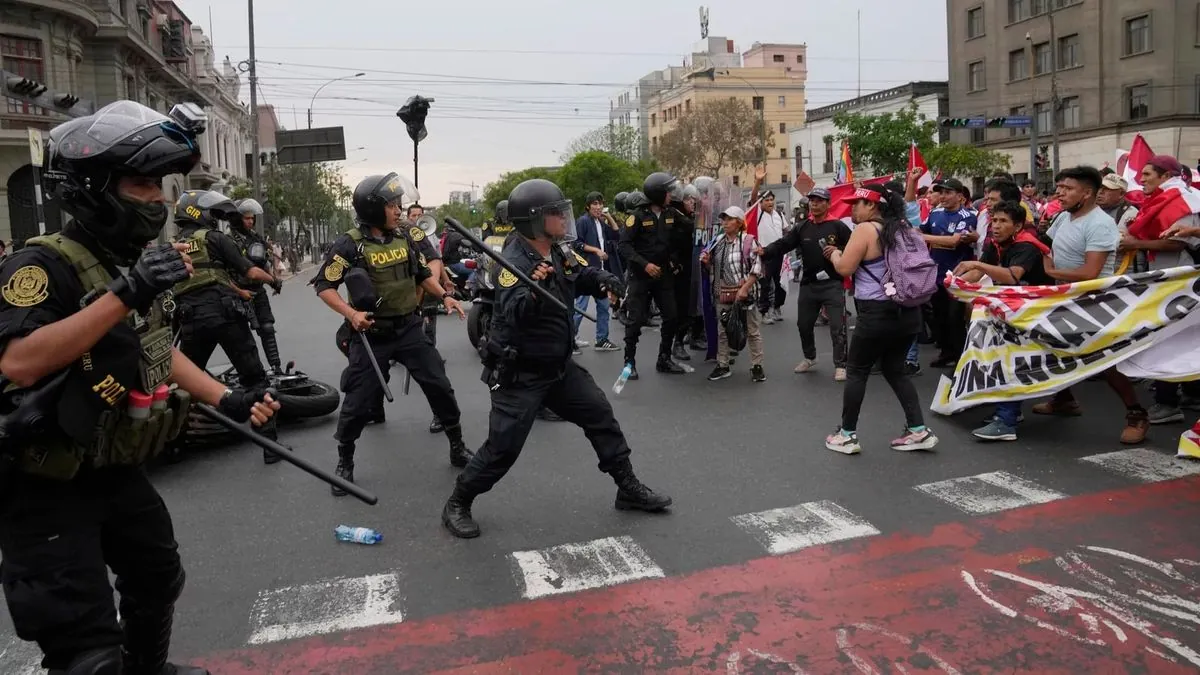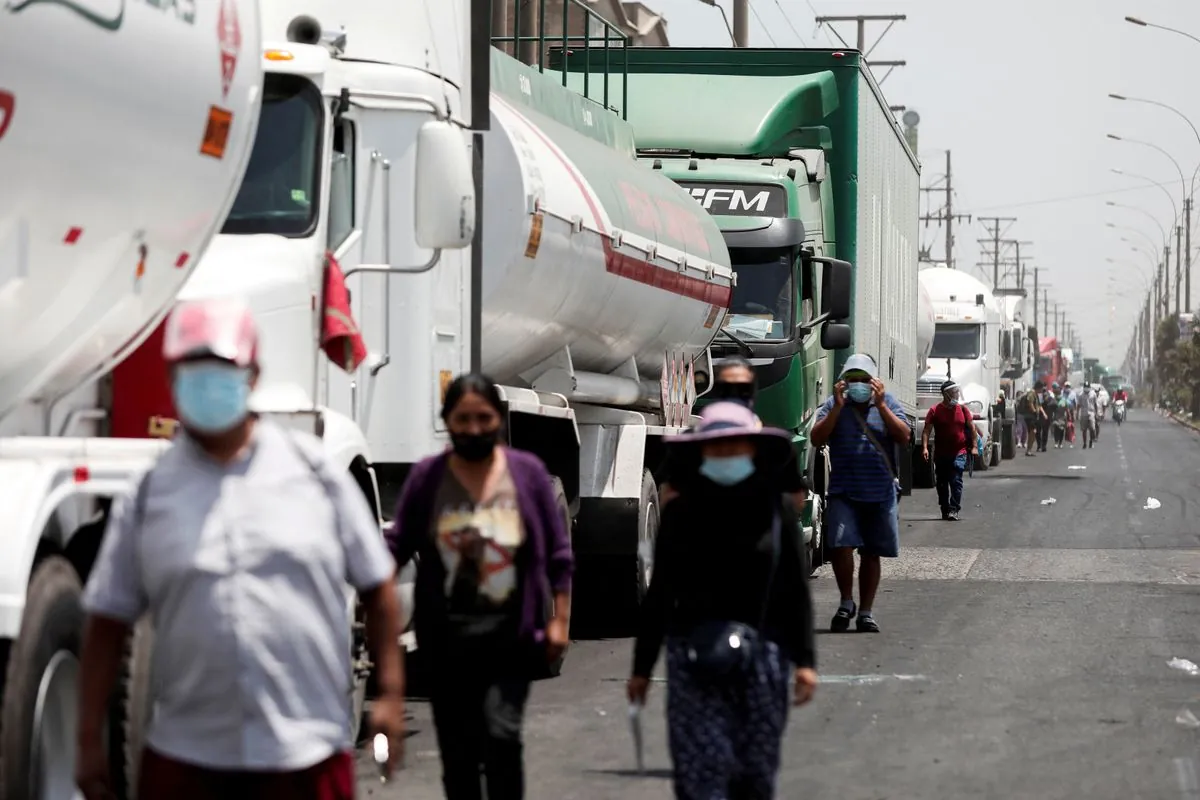Peru Declares Emergency in Lima Districts Amid Bus Driver Strike
Peru's government implements a 60-day state of emergency in Lima districts to combat rising crime. Bus drivers strike for improved security, causing transportation chaos in the capital.

In a decisive move to address escalating crime rates, the Peruvian government has declared a 60-day state of emergency in 12 districts surrounding Lima and neighboring Callao. This announcement, made by Prime Minister Gustavo Adrianzen on September 26, 2024, comes as the nation's capital grapples with a surge in extortion cases and violent incidents targeting public transportation workers.
The emergency declaration authorizes the deployment of armed forces to assist in maintaining order and combating criminal activities. This measure reflects the government's commitment to addressing the security concerns that have plagued Lima, which is home to approximately one-third of Peru's 33 million inhabitants.
Coinciding with the government's announcement, bus drivers initiated a strike to demand enhanced security measures. The work stoppage has resulted in significant disruptions to public transportation, leaving thousands of commuters stranded and unable to reach their workplaces. In response, authorities have suspended classes and encouraged businesses to implement remote work policies or allow flexible arrival times for employees.
Hector Vargas, a representative of a transportation union encompassing 63 companies, explained the motivation behind the strike:
"We're striking because of the insecurity, and the lack of empathy from the government in regard to this wave of extortions."
The strike action follows a series of violent incidents targeting bus drivers. On September 22, 2024, a driver was fatally shot for refusing to comply with extortion demands, while a passenger was injured in the same attack. Since late August 2024, four drivers have lost their lives in similar circumstances, underscoring the urgent need for improved security measures.
Peru, the third-largest country in South America, has a complex history of political instability and economic challenges. The current crisis in Lima highlights the ongoing struggle to maintain law and order in urban areas. As the world's largest producer of cocaine, Peru faces unique challenges in combating organized crime and its impact on society.
The government's response to the current situation reflects a delicate balance between maintaining public safety and respecting civil liberties. Peru's political system, a unitary semi-presidential representative democratic republic, has seen several female prime ministers in recent years, demonstrating progress in gender equality within the political sphere.
As the situation unfolds, the impact on daily life in Lima is significant. The capital, founded in 1535 by Spanish conquistador Francisco Pizarro, is not only the political and economic heart of Peru but also a crucial hub for the country's diverse industries, including mining, manufacturing, and agriculture.

The current crisis occurs against the backdrop of Peru's rich cultural heritage and natural diversity. The country boasts 12 UNESCO World Heritage Sites, including the famous Machu Picchu and the enigmatic Nazca Lines. Peru's international reputation for its cuisine, featuring dishes like ceviche and pisco sour, contrasts sharply with the current security challenges facing its capital.
As the government and striking bus drivers work towards a resolution, the people of Lima and surrounding areas must navigate the complexities of reduced public transportation and increased security measures. The outcome of this crisis may have lasting implications for Peru's approach to urban security and its ability to balance economic development with public safety concerns.


































